How to Choose Between Boundary
Conditions for Coil Modeling
22, 2016
Walter Frei March
Whenever you are modeling coils with the
AC/DC Module in COMSOL Multiphysics, you
need to consider what type of boundary
conditions to use to truncate your modeling
domain. In this blog post, we will introduce
the different boundary conditions that you
can use and how to choose between them.
�
Boundary Conditions for
Modeling Coils: An Overview
As we introduced in our previous blog post on
the basics of coil modeling, whenever you are
modeling an electromagnetic coil, you need
to think in terms of a closed current loop. The
current loop can be entirely within the
modeling domain or closed via a boundary
condition, as illustrated in the figure below.
A coil connected to a voltage source (left) and
two different approaches to closing the current
loop (right).
As we learned earlier, if the coil extends to the
boundaries of the modeling domain, then the
current flowing through the coil will return
�
along the modeling domain boundaries.
Otherwise, to close the current loop, the coil
must loop within the modeling domain. Here,
we will concern ourselves with two questions.
First, what boundary conditions should we use?
And second, how far away from the coil
should these boundaries be?
We will start by thinking of our coil as sitting
in a space that extends to infinity and does
not contain anything else. Obviously, we
cannot model an infinitely large domain. We
must truncate our modeling domain to some
finite size that will give reasonably accurate
results but will not require too much
computational effort to solve. First, let us
consider the case of an axisymmetric coil that
is closed within the modeling domain. This
case can be analyzed via a 2D axisymmetric
model, as shown below.
�
A circular coil in a spherical modeling domain
can be modeled via a 2D axisymmetric model.
The domain radius is normalized with respect
to the coil radius.
We will consider two different boundary
conditions along the outside radius of the
modeling domain shown above: the Magnetic
Insulation (MI) boundary condition and the
Perfect Magnetic Conductor (PMC) boundary
condition. The Magnetic Insulation condition
can be physically interpreted as a boundary to
a domain that has infinite electrical
conductivity. That is, the Magnetic Insulation
condition implies that our coil is enclosed
�
within a sphere of very high conductivity.
Currents can flow and be induced on a
magnetic insulation boundary. Mathematically
speaking, the magnetic insulation fixes the
field variable that is being solved for to be
zero at the boundary; it is a
homogeneous Dirichlet boundary condition.
On the other hand, the Perfect Magnetic
Conductor boundary condition can be
thought of as the opposite boundary
condition. Mathematically, it enforces the
homogeneous Neumann condition, meaning
the derivative of the solution field in the
direction normal to the boundary is zero. No
current can flow, nor be induced on, a perfect
magnetic conductor boundary.
Since these two boundary conditions can be
thought of as opposites, let’s take a look at
what happens to the solution as we solve the
above problem with an increasing radius of
the surrounding air sphere and monitor the
�
computed coil inductance. We can perform a
parametric sweep over the domain radius and
then take the average of the solutions for the
two different boundary conditions by joining
solutions. These results are shown in the plot
below, and we can observe that the solution
for the inductance converges with increasing
domain radius. We can also observe that the
average of the two solutions converges even
faster.
Normalized inductance of a coil with an
�
increasing radius for different boundary
conditions.
From the above plot, we can conclude that it
doesn’t matter which boundary condition we
use for this axisymmetric problem, as long as
we study the solution with an increasing
domain radius. We can also conclude that we
can run the model with a relatively smaller
domain radius and with both Magnetic
Insulation and Perfect Magnetic Conductor
boundary conditions to take the average of
the two cases. This average, even for a small
radius, will give a good prediction of the
solution at larger domain radii.
Replacing Boundary
Conditions with Domain
Conditions
�
We can, in fact, avoid the question of
boundary conditions entirely by truncating
our modeling domain with a domain
condition known as an infinite
element domain. The infinite element domain
requires that you add an additional domain as
a layer around the exterior of the modeling
domain. The software then internally performs
a coordinate stretching within this domain
such that the domain is infinitely large, for all
practical purposes. Thus, the solution from a
model with infinite element domains will be
the same as when the domain radius is
increased.
The advantage of the infinite element domain
is that it obviates the question of choosing
between boundary conditions as well as the
question of the domain size. The infinite
element domain can be placed in very close
proximity to the coil — it could even be
touching. The only additional work that the
�
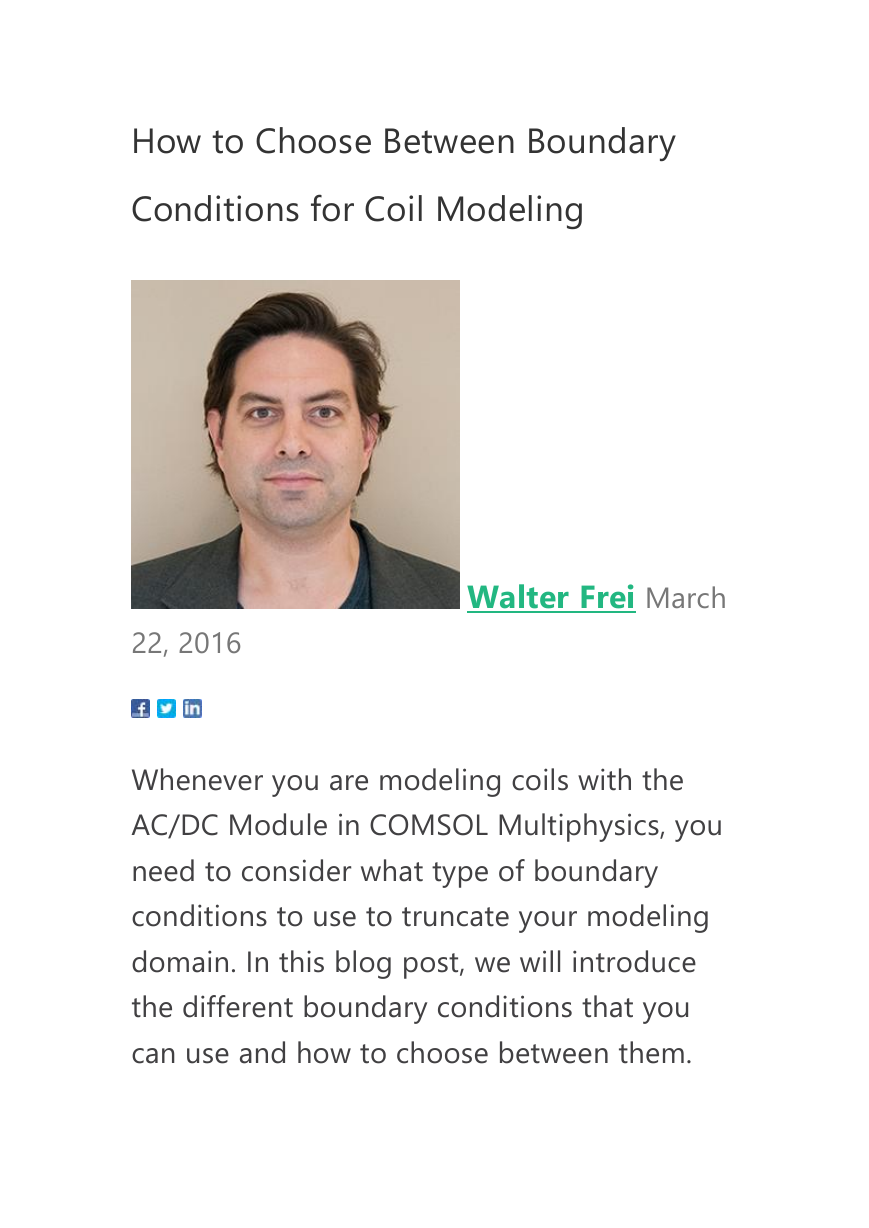
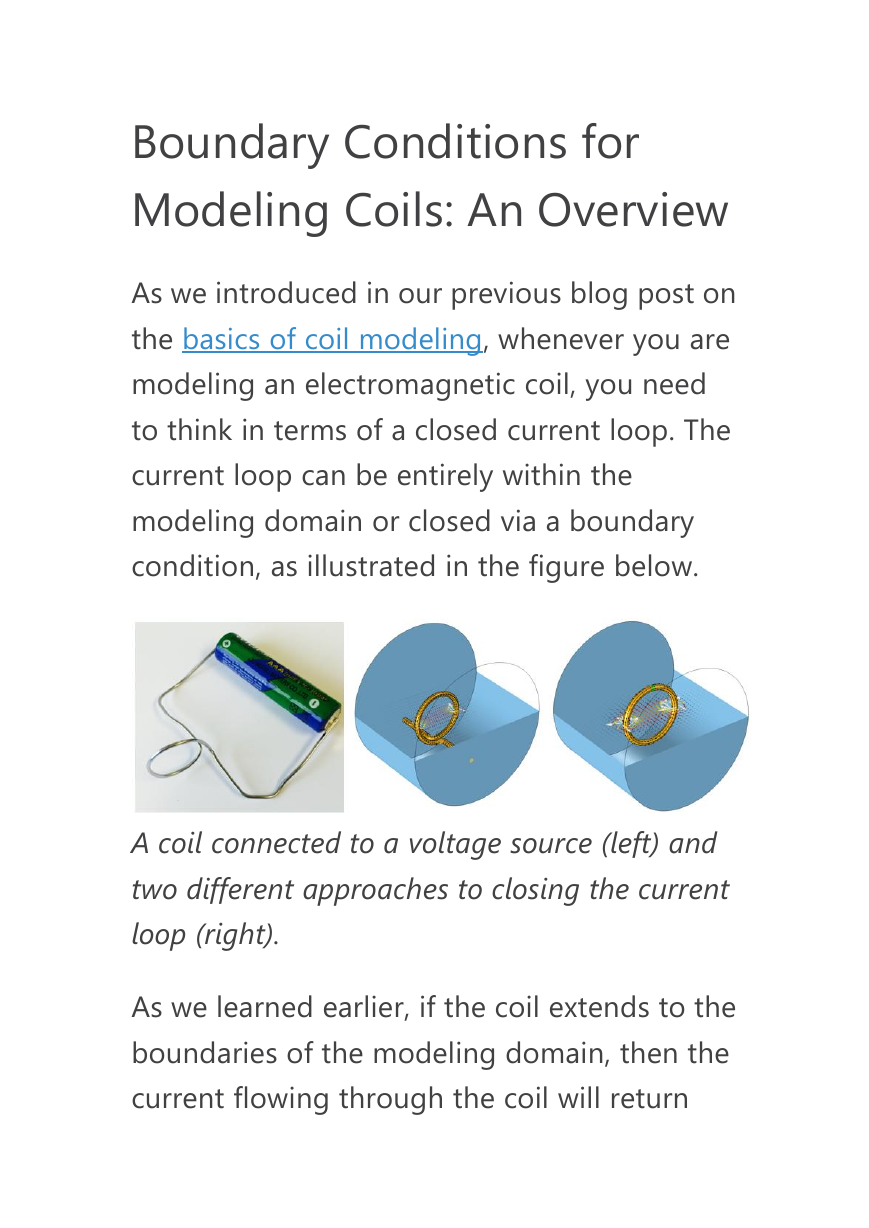
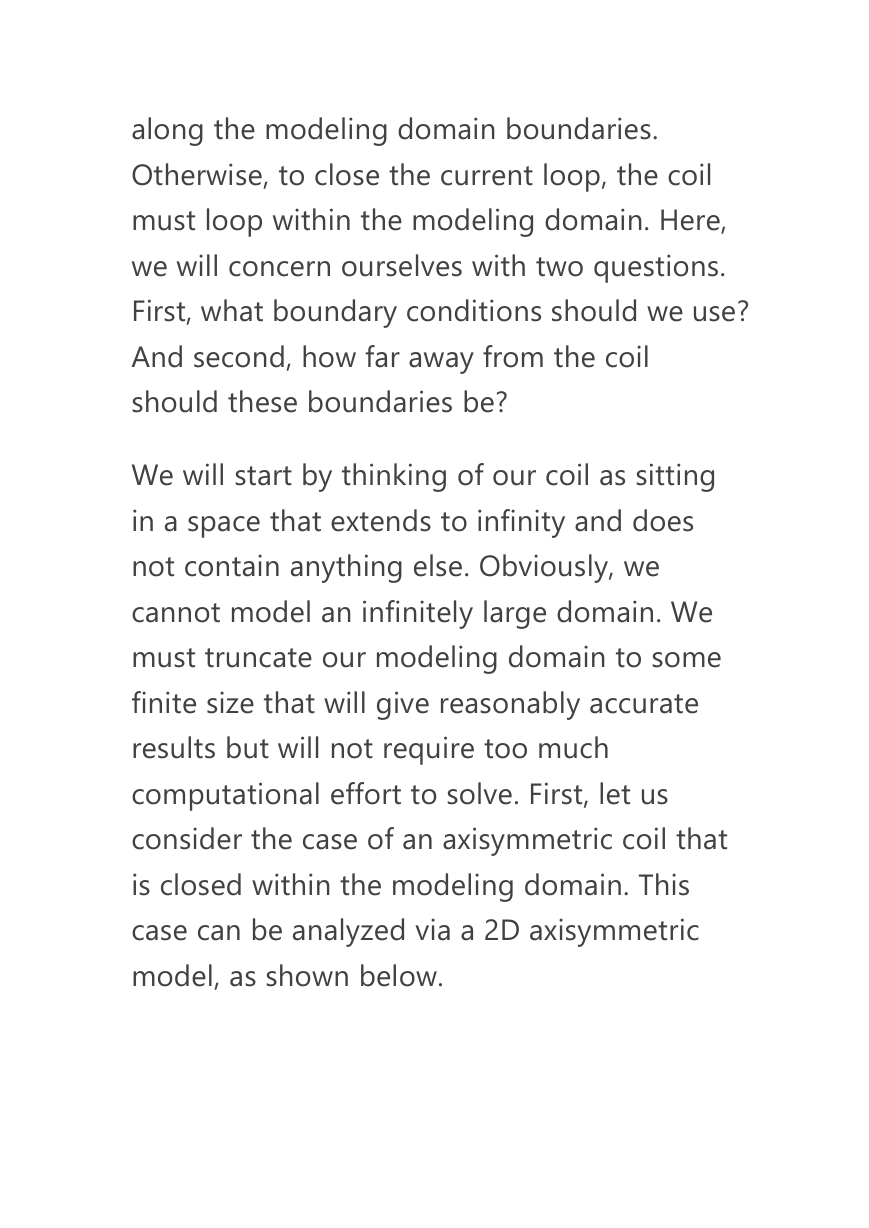
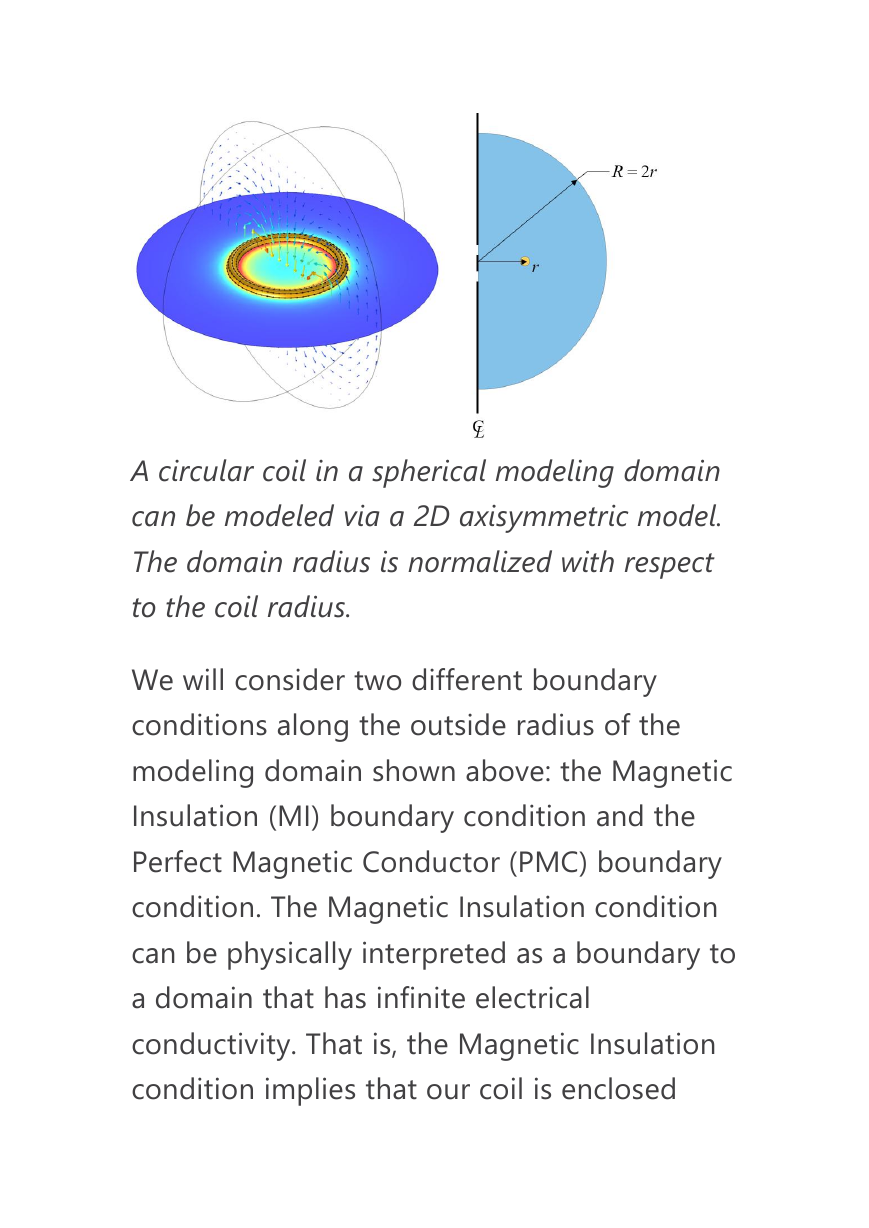


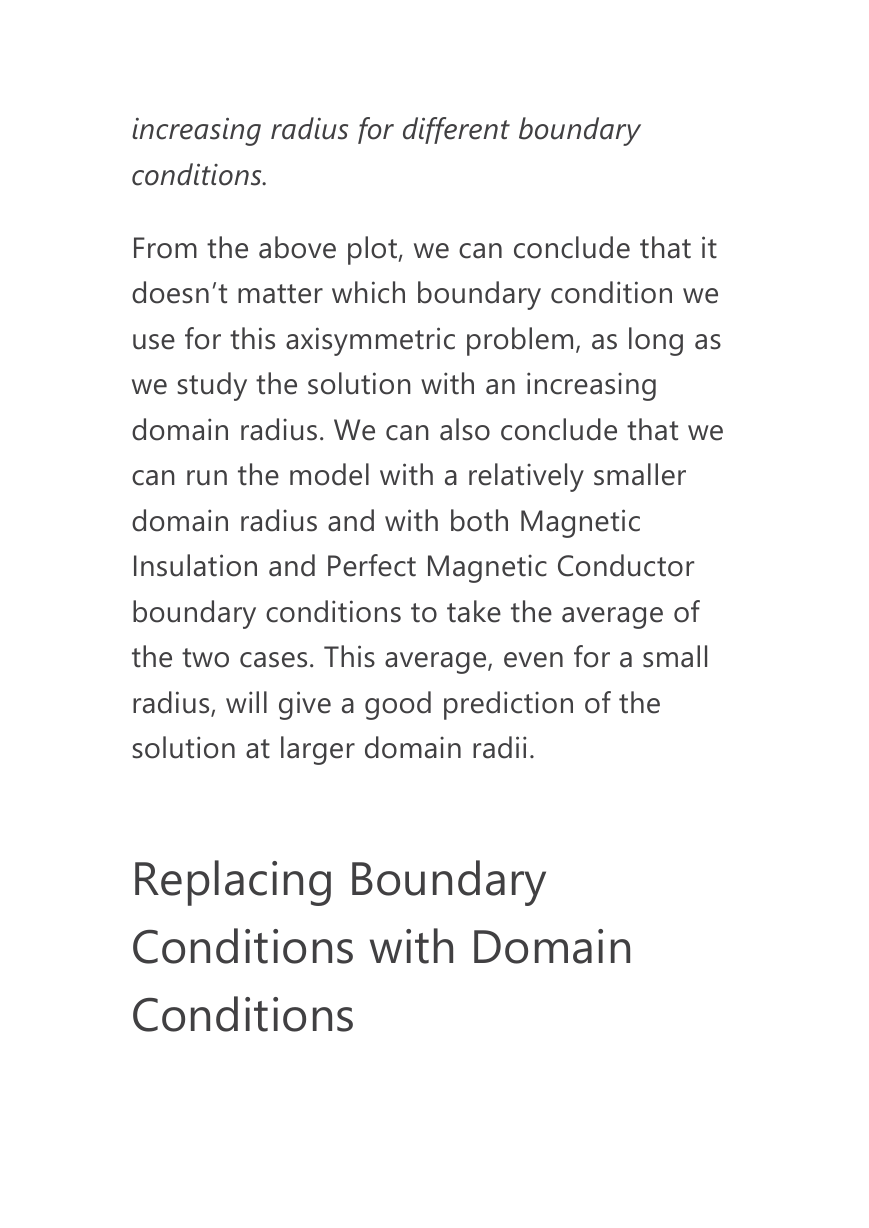
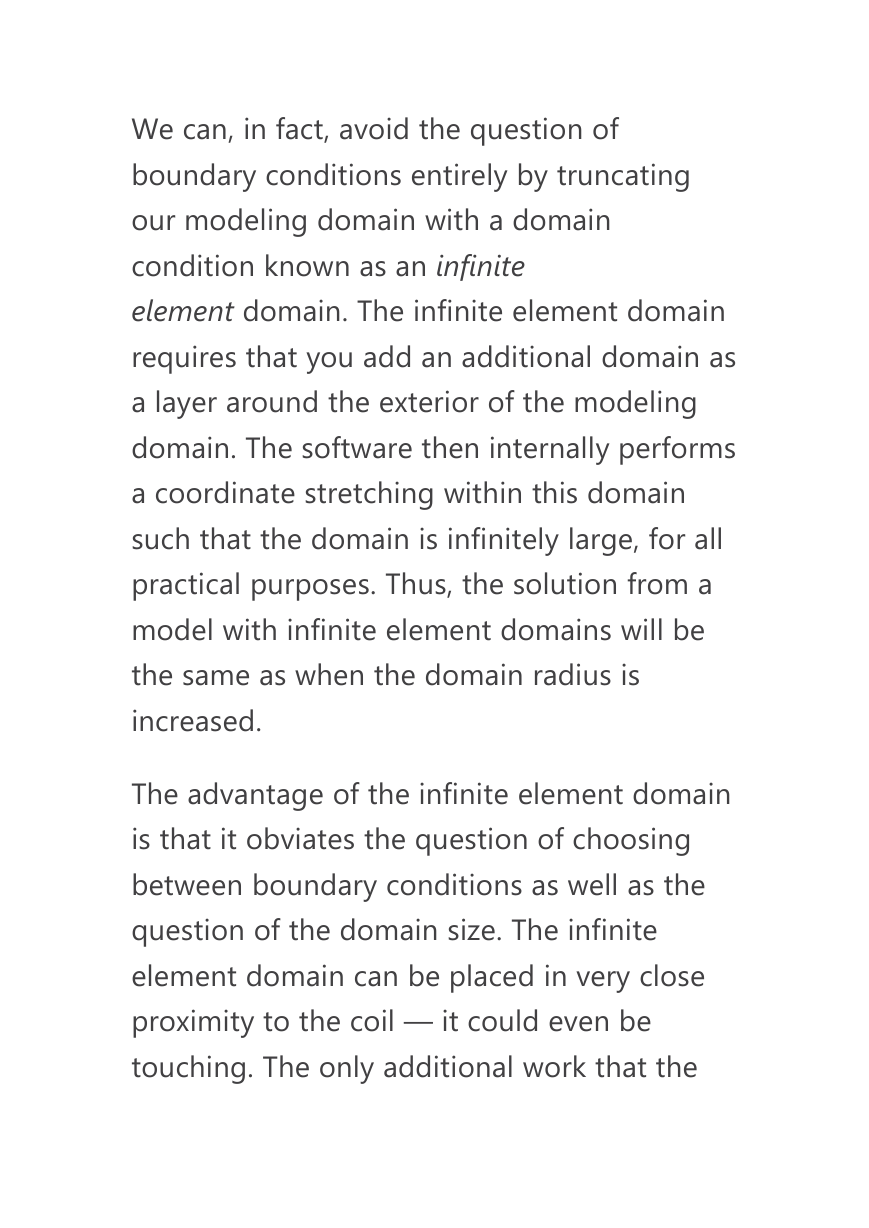








 2023年江西萍乡中考道德与法治真题及答案.doc
2023年江西萍乡中考道德与法治真题及答案.doc 2012年重庆南川中考生物真题及答案.doc
2012年重庆南川中考生物真题及答案.doc 2013年江西师范大学地理学综合及文艺理论基础考研真题.doc
2013年江西师范大学地理学综合及文艺理论基础考研真题.doc 2020年四川甘孜小升初语文真题及答案I卷.doc
2020年四川甘孜小升初语文真题及答案I卷.doc 2020年注册岩土工程师专业基础考试真题及答案.doc
2020年注册岩土工程师专业基础考试真题及答案.doc 2023-2024学年福建省厦门市九年级上学期数学月考试题及答案.doc
2023-2024学年福建省厦门市九年级上学期数学月考试题及答案.doc 2021-2022学年辽宁省沈阳市大东区九年级上学期语文期末试题及答案.doc
2021-2022学年辽宁省沈阳市大东区九年级上学期语文期末试题及答案.doc 2022-2023学年北京东城区初三第一学期物理期末试卷及答案.doc
2022-2023学年北京东城区初三第一学期物理期末试卷及答案.doc 2018上半年江西教师资格初中地理学科知识与教学能力真题及答案.doc
2018上半年江西教师资格初中地理学科知识与教学能力真题及答案.doc 2012年河北国家公务员申论考试真题及答案-省级.doc
2012年河北国家公务员申论考试真题及答案-省级.doc 2020-2021学年江苏省扬州市江都区邵樊片九年级上学期数学第一次质量检测试题及答案.doc
2020-2021学年江苏省扬州市江都区邵樊片九年级上学期数学第一次质量检测试题及答案.doc 2022下半年黑龙江教师资格证中学综合素质真题及答案.doc
2022下半年黑龙江教师资格证中学综合素质真题及答案.doc